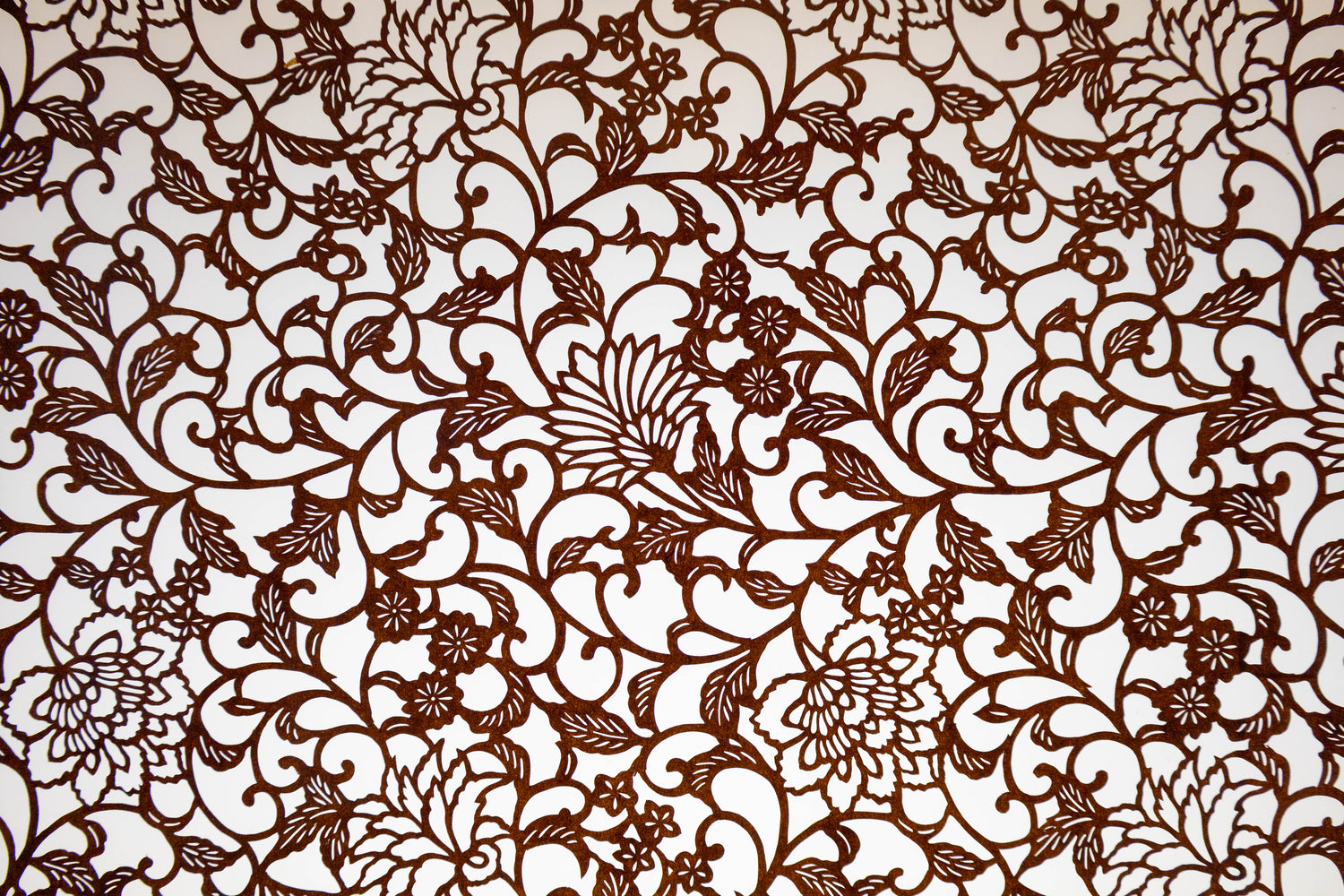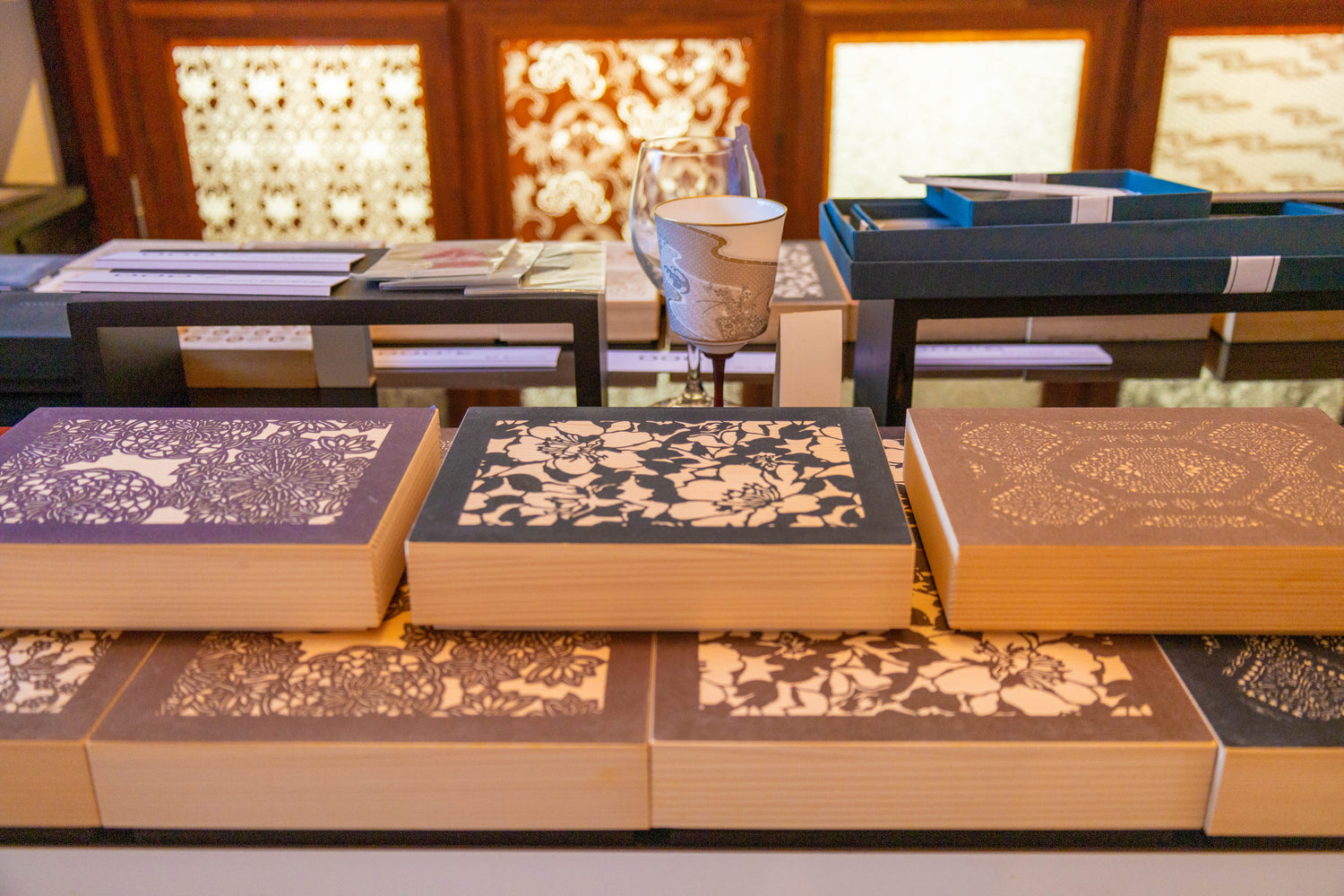株式会社オコシ型紙商店
Compact mirror with Ise Katagami pattern [Arabesque] SILVER
Compact mirror with Ise Katagami pattern [Arabesque] SILVER
Supplementary product information
Supplementary product information
Production area: Mie Prefecture
Size:
・(Diameter) 70mm
・(Height) 10mm
Materials: PU Leather・Glass・Stainless steel
Specifications: Round type Regular mirror + Magnifying mirror
Shipping: Shipped via Nekopos (delivered to customer's mailbox)
Couldn't load pickup availability
Palm-sized and designed for daily use, it opens and closes smoothly with a built-in magnet and won't take up much space in a mini bag. Equipped with 2 mirrors (regular mirror and magnifying mirror) to support makeup touch-ups and grooming checks. The soft-touch faux leather provides a pleasant feel and is designed to resist fingerprints and stains.
The back is white PU leather. (No pattern on the back.)
![Compact mirror with Ise Katagami pattern [Arabesque] SILVER](http://rashiku.store/cdn/shop/files/compactmirror_arabesque_silver_1.jpg?v=1689656637&width=1445)
![Compact mirror with Ise Katagami pattern [Arabesque] SILVER](http://rashiku.store/cdn/shop/files/compactmirror_arabesque_silver_2.jpg?v=1689656637&width=1445)
![Compact mirror with Ise Katagami pattern [Arabesque] SILVER](http://rashiku.store/cdn/shop/files/compactmirror_arabesque_silver_3.jpg?v=1689656636&width=1445)
![Compact mirror with Ise Katagami pattern [Arabesque] SILVER](http://rashiku.store/cdn/shop/files/compactmirror_arabesque_silver_4.jpg?v=1689656636&width=1445)
![Compact mirror with Ise Katagami pattern [Arabesque] SILVER](http://rashiku.store/cdn/shop/files/compactmirror_arabesque_silver_5.jpg?v=1689656636&width=1445)
![Compact mirror with Ise Katagami pattern [Arabesque] SILVER](http://rashiku.store/cdn/shop/files/compactmirror_a355c144-dacf-460f-a2c5-9c901f6295cd.jpg?v=1689656636&width=1445)

The History of Ise Katagami
While there are various theories about the origins of Ise katagami, it is said that during the Edo period, stencil dyeing began to be used for samurai kamishimo ceremonial dress, and as komon patterns became increasingly intricate, the stencil papers developed accordingly. With the protection of the Kishu domain, stencil merchants organized trading associations and traveled throughout the country to sell their wares, leading to the nationwide spread of Ise katagami.

Ise Katagami Techniques and Production Process
There are 4 types of traditional carving techniques: kiri-bori (awl carving), tsuki-bori (thrust carving), hiki-bori (pull carving), and dougu-bori (tool carving). Typically, each craftsman works as a specialist in their respective carving technique.
The production process involves creating preliminary sketches of the design, carving the kohon-gata (small master pattern), making kohon-utsuhi (small pattern copies), and then proceeding to carve the transferred patterns.

Examples of Ise Katagami usage
Ise-katagami refers to stencil paper with patterns carved out for the purpose of dyeing designs on "kimono." Its artistry and design appeal have not only captivated overseas audiences but have also been widely incorporated into fashion, interior design, and other products and projects.
Ise Katagami
Ise Katagami is produced in the Shiroko, Teraie, and Ejima districts of Suzuka City, Mie Prefecture.
Ise Katagami is created by applying persimmon tannin to Mino washi (Japanese paper), layering the sheets alternately in vertical and horizontal directions to increase strength, and applying persimmon tannin again to create the base paper. Using carving knives, kimono patterns and designs are hand-carved into this base paper to create the stencils.






